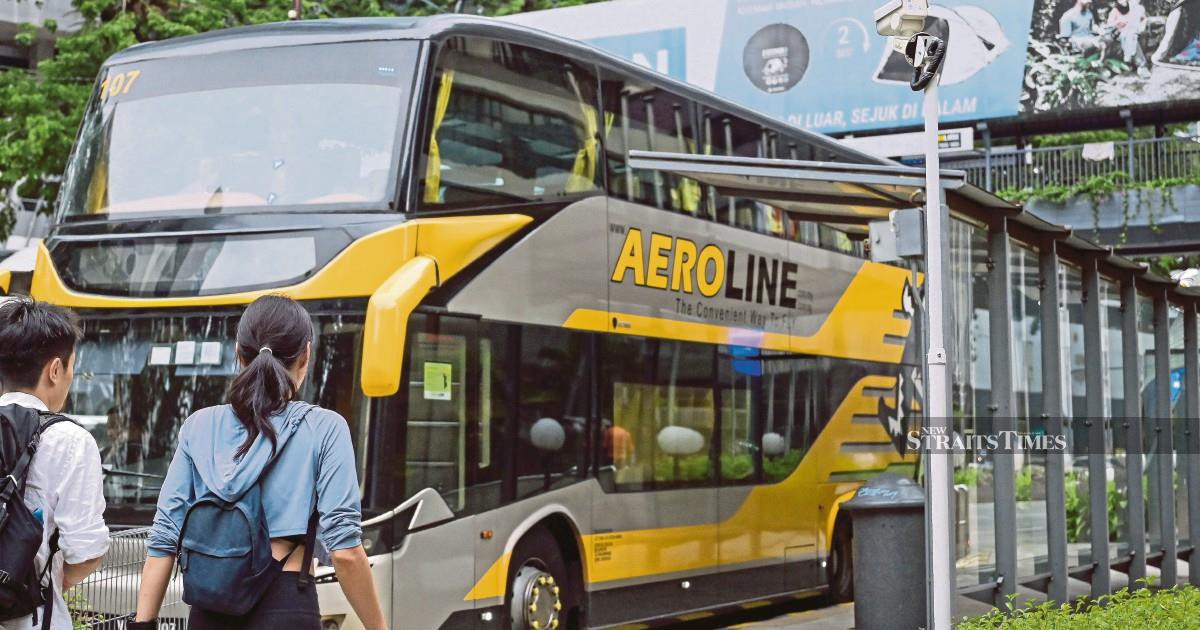THE recent suspension of Aeroline coach services isn’t just about the company breaking rules. It calls into question the country’s public transport policy.
While experts are saying the Land Public Transport Agency (APAD) is technically right in citing Aeroline for breach of some terms of its operating permit, it must be asked why act now after it has been operating for 23 years? And with an impeccable safety record?
One of the reasons given for the suspension is to keep the capital city free of traffic congestion. One would have thought it would put more public buses on city roads rather than reduce them.
Private cars are the cause of traffic congestion in cities, not buses. Most certainly not Aeroline coaches.
APAD wants Aeroline to operate from Terminal Bersepadu Selatan (TBS), some 13.5km away from the city. It was never built for the convenience nor comfort of commuters.
Aeroline has rightly refused to operate from TBS, a transport hub which has been rated a dismal 2.6 by TripAdvisor!
The authorities have failed us in Pudu Raya, and now in TBS. We have to learn that one size doesn’t fit all. If cities in other countries can do a good job of moving people with multiple terminals, why can’t we?
Dr Rosli Khan, who has been operating a transport consultancy for 30 years, doesn’t mince his words. To him, Kuala Lumpur’s public transport landscape is a study in misplaced ambition and persistent neglect, both present in Pudu Raya and TBS.
He says “both projects expose the rot in City Hall governance and Malaysia’s approach to urban transport planning”.
Start with Pudu Raya. In 1992, City Hall partnered with Plaza Rakyat Sdn Bhd to redevelop the old transport hub into a modern one with offices, hotels and retail spaces.
That ambition collapsed when the company went bankrupt during the 1997 financial crisis. Since then, it has been exhibiting the signs of wasted ambition — a rusting steel skeleton in the middle of the city.
Mayors and ministers have come and gone with promises of the project’s revival, but Pudu Raya remains a rusty steel story. Rosli says the site stands as a physical monument to public failure — a prime piece of city-centre land left idle while billions of ringgit in potential economic activity is lost.
To him, the private-public-public partnership, like the one entered into by City Hall, never benefits the public.
When it was unveiled in 2011, TBS, too, came packed with the vision of curing Pudu Raya’s traffic congestion — an integrated terminal that would serve as a new benchmark for intercity bus travel.
Rosli says the concept was flawed right from the start. Built far away from the city centre, TBS is inconvenient for passengers, especially those from outstation who are forced to spend time and money to reach the city.
Bus operators, too, are being forced to relocate there at the threat of permit suspension.
To Rosli, City Hall’s history with transport terminals reads like a catalogue of neglect: Hentian Putra, demolished; Hentian Duta, underused; Hentian Perkeliling, relocated to Gombak; Plaza Rakyat, abandoned; and TBS, wasting away.
© New Straits Times Press (M) Bhd




![[UPDATED] Ewon Benedick resigns from Cabinet](https://prwire.my/wp-content/uploads/2025/11/UPDATED-Ewon-Benedick-resigns-from-Cabinet-300x158.jpg)

